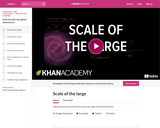
Attempting to comprehend the scale of the large. Created by Sal Khan.
- Subject:
- Astronomy
- Physical Science
- Material Type:
- Lesson
- Provider:
- Khan Academy
- Provider Set:
- Khan Academy
- Author:
- Sal Khan
- Date Added:
- 05/17/2011

Attempting to comprehend the scale of the large. Created by Sal Khan.
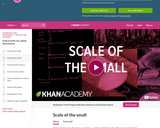
From honey bees to cells, viruses, and atoms -- understanding the scale of the very small. Created by Sal Khan.
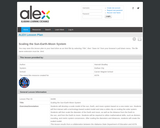
Students will develop a scale model of the sun, Earth, and moon system based on a one-meter sun. Students will first interact with a technology-based scaled model and view a video clip on scaling the solar system. Students will then scale the diameter of the Earth and moon, as well as the distance from the Earth to the sun, and from the Earth to moon. Students will be required to utilize mathematical skills, such as division, rounding, and metric system conversions. After scaling the diameters and distances, students will create the scaled model. This lesson results from a collaboration between the Alabama State Department of Education and ASTA.
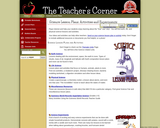
Go to our Lesson Plans indexWe have lesson plans for art, health, math, reading, social studies, technology, writing and more.
Science Lesson Plans, Activities and ExperimentsPique interest and help your students enjoy learning about the "how" and "why".
Science Lesson Plans and ActivitiesDon't forget to check out the Thematic Units Page.
Guinness World Records Superlative Science (Grades 2-5)Many Activities Using the Guinness World Records Teacher GuideScience ExperimentsFind a bunch of exciting and easy science experiments that can be done with simple household products.
EMAIL us your favorite science lesson plan.
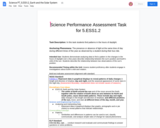
This performance assessment aligns with NGSS Performance Expectation 5.ESS1.2 and is intended to be used as an interim assessment. These assessments can either be used summatively, as an end of learning activity, or formatively, utilizing student responses to identify next instructional steps.
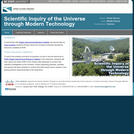
To add to the existing curriculum for teachers on how to use the resources of PARI (Pisgah Astronomical Research Institute) in the classroom. Students will learn about and utilize PARIs 4.6m Smiley radio telescope to conduct real scientific investigations of the Universe. Online supporting podcasts, activities and quizzes will allow students to conduct first-hand inquiry driven research, thus giving personal value/ownership to the experience.
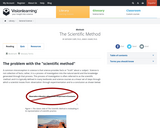
This lesson is an introduction to the scientific method of observation, hypothesis formation and experimentation.

This lesson uses NASA satellite data to correlate cloud cover over Africa to the solar declination. The student will access NASA data using the MY NASA DATA Live Access Server and import the data into Excel spreadsheet software. Students will use NASA satellite data to correlate cloud cover over Africa to the solar declination.

Why our closeness to the sun does not dictate the seasons. Created by Sal Khan.

In this classroom activity, students create models of the spinning Earth and see how the planet's revolution around the Sun creates differing daily and seasonal patterns of dark and light. The printable five-page handout includes a series of inquiry-based questions to get students thinking about daily and seasonal light cycles, detailed experiment directions and a worksheet that helps students use the experiment results to gain a deeper understanding of why Antarctica doesn't have daily nights and days.

This laboratory activity demonstrates how seismic waves are generated and helps students understand how they can reveal the composition of Earth's inner layers. Students will construct models by filling shoe boxes with various materials, drop rocks on them to generate 'seismic waves', record the waves, and make observations about their differences.

S-waves and P-waves. Created by Sal Khan.
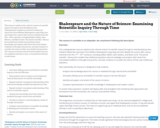
This resource explores the cultural context of scientific inquiry through an interdisciplinary lens. Undergraduate students are invited to follow two characters from William Shakespeare’s play King Lear who debate the cosmos with various scientists from the 17th – 20th centuries, including Galileo Galilei, Isaac Newton, and Marie Curie. The joined scientific / literary lens models how intellectual questions about knowledge and analysis often draw from interrelated traditions of thought and practice, and asks students to consider the nature of their own intellectual questions. The resource is broken into five brief modules and can be completed entirely in class, or in partial increments as take-home.

This listing includes a wide range of short videos (15 minutes or less) that can be used in introductory astronomy courses. It is organized by the chapter topics in the OpenStax Astronomy textbook. We don’t include simulations. To suggest other video that you have found particularly useful for Astro 101 courses, please drop a line to the compiler at: fraknoi@fhda.edu

In this decision-making exercise, students investigate what would occur if a dam were built along Nanticoke Creek, a real stream just north of West Corners near the Village of Endicott, New York. They will use topographic maps to determine how much area would be flooded by the new reservoir, to study river drainages, and to consider the impacts of dams on a region. They must also consider rivers in the context of their relation to humankind. The exercise can be extended to other, more local locations having similar topography.

In this activity, students investigate convection as it applies to Earth processes. They will assemble a model using a bread pan to view convection in two paired cells. They will also investigate the strengths and weaknesses of the model thay have constructed and answer some questions about what they are seeing.
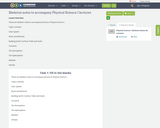
These are skeleton notes to accompany lectures in Physical Science I.Topics covered:Solar SystemRocks and MineralsBuilding Earth's Surface: Folds and FaultsTsunamisThe AtmosphereThe HydrosphereWeatherClimate
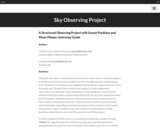
This guide describes a novel project structure for sky observations commonly assigned in introductory level astronomy students at either the high school or undergraduate level. The project is an outside class assignment optimized for a large course that meets during the day. The goal of this activity is for students to make independent observations at a fixed time of day to develop an understanding of: (1) how annual motion of the Earth relates to observed position of the Sun as it sets towards the West; and (2) changes in the Moon phase over the lunar month and how the phase of the Moon relates to its position in the sky relative to the Sun. Students synthesize their understanding by responding to summary questions at the conclusion of the project. The questions require students to use their collection of observations to make predictions about future sunset and Moon positions and Moon phases.
A critical component of this work is an associated scoring script, available through GitHub. The algorithm uses Sun and Moon position data and Moon phase data downloaded by the user from the United States Naval Observatory to score student input and provide feedback in an efficient manner. This allows instructors to assign and grade student observations even in a large university class.
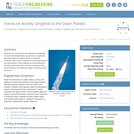
Students are introduced to the engineering challenges involved with interplanetary space travel. In particular, they learn about the gravity assist or "slingshot" maneuver often used by engineers to send spacecraft to the outer planets. Using magnets and ball bearings to simulate a planetary flyby, students investigate what factors influence the deflection angle of a gravity assist maneuver.
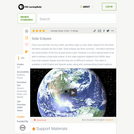
What is a solar eclipse and why are they only visible in some parts of the world? In this video segment adapted from NASA, astronomer Susan Stolovy uses animations to provide an answer to these questions.